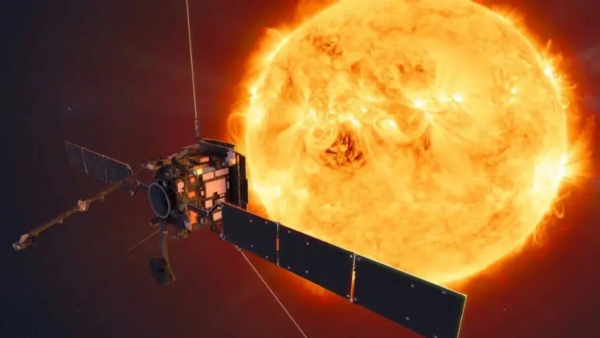Preparing mission to study the Sun through Aditya-L1 mission: ISRO Chairman
Total Views |
According to Chairman Somanath S, the Indian Space Research Organization ( ISRO ) is almost finished with XPoSat (X-ray Polarimeter Satellite), the country's first specialized polarimetry mission to examine various dynamics of intense astronomical X-ray sources under harsh settings.

He stated that preparations for the Aditya-L1 mission to investigate the Sun are underway and that negotiations are ongoing to develop a satellite to research extrasolar planets (exoplanets). "We are also discussing further missions to the Moon for landing," the ISRO leader, who is also the Secretary of the Department of Space, said in his inaugural lecture to the virtual Space Science Technology & AwaReness Training (START) programme 2023.
On July 14, ISRO launched the Chandrayaan-3 mission to the Moon.
He stated that conversations are taking place about missions to investigate other planetary objects such as Venus, as well as how to build a satellite to research extrasolar planets (planets outside the solar system).
The XPoSat, according to ISRO officials, the national space agency headquartered here, would carry two research payloads in low earth orbit.
POLIX (Polarimeter Instrument in X-rays), the principal payload, will measure polarimetry parameters (degree and angle of polarization) in the medium X-ray energy range of 8-30 keV photons of astronomical origin.
According to the researchers, the XSPECT (X-ray Spectroscopy and Timing) payload will provide spectroscopic data in the energy range of 0.8-15 keV. Aditya L1 will be India's first space-based mission to study the Sun. The spacecraft will be positioned in a halo orbit around the Sun-Earth system's Lagrange point 1 (L1), which is approximately 1.5 million kilometers from Earth.
A satellite in halo orbit around the L1 point has the significant benefit of continually observing the Sun with no occultation/eclipses. According to ISRO, this will give a larger benefit of detecting solar activity and its influence on space weather in real time.
Four payloads directly see the Sun from the exceptional vantage point L1, while the remaining three payloads conduct in-situ particle and field investigations at the Lagrange point L1, offering essential scientific studies of the propagatory influence of solar dynamics in the interplanetary medium.

